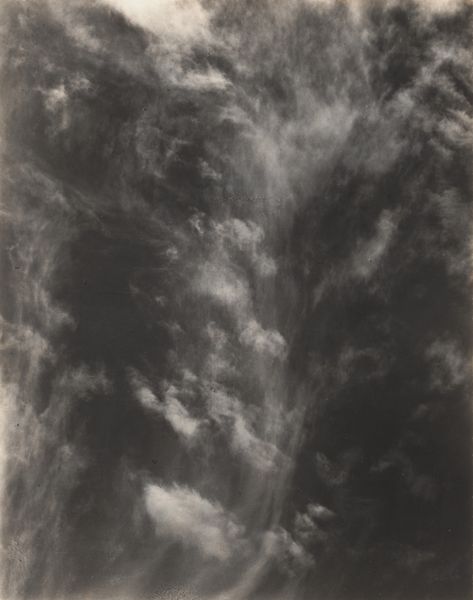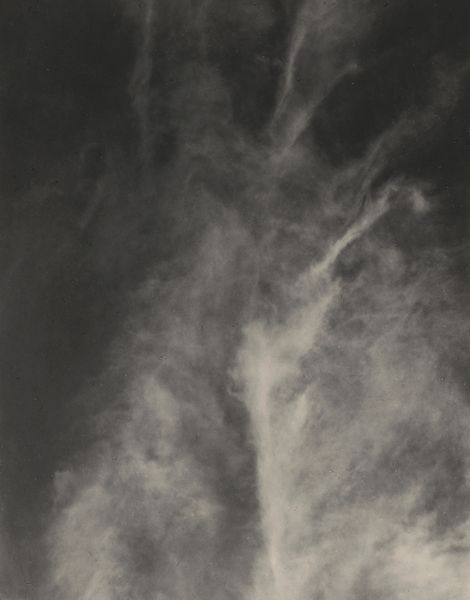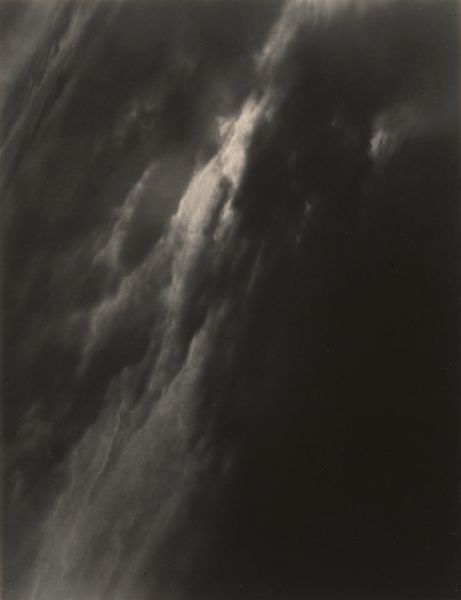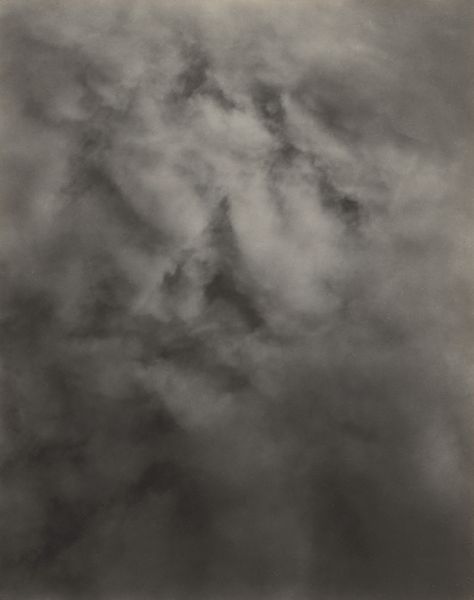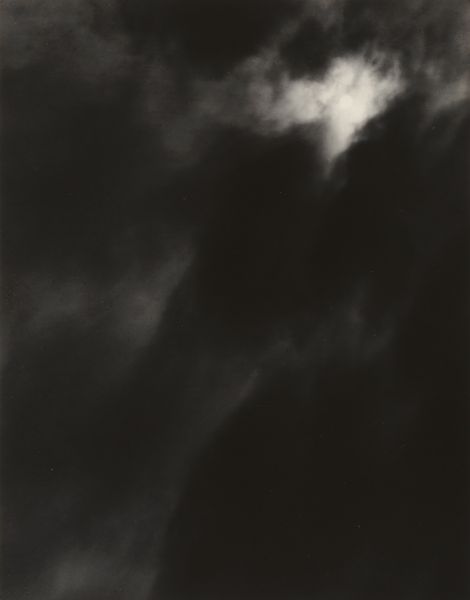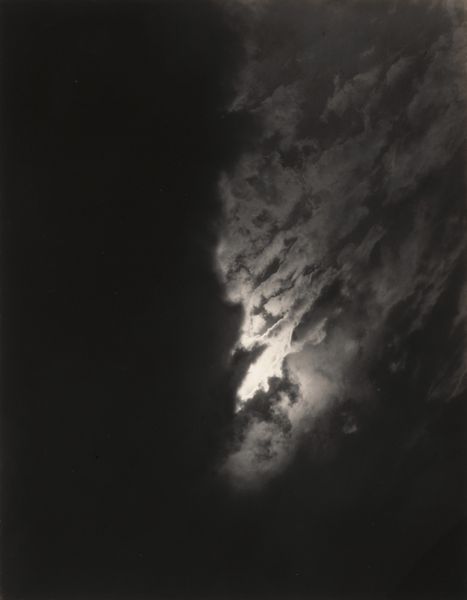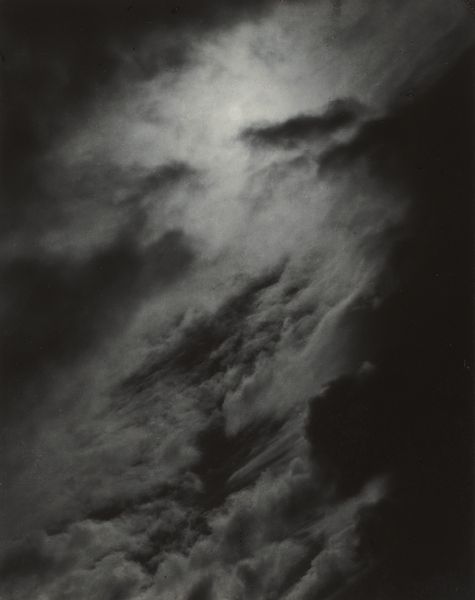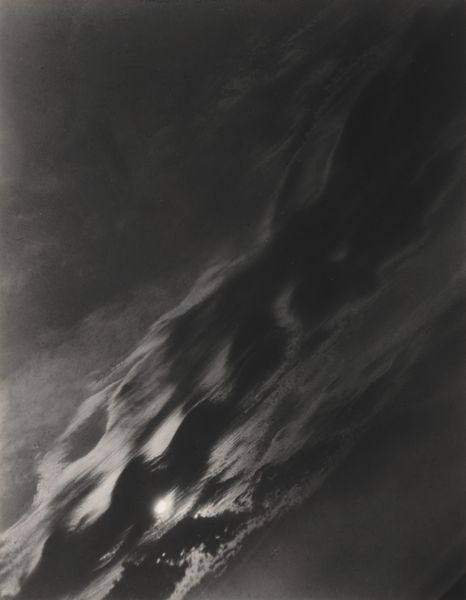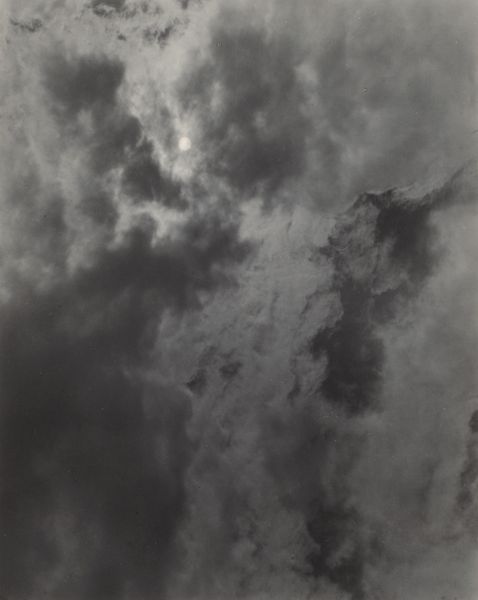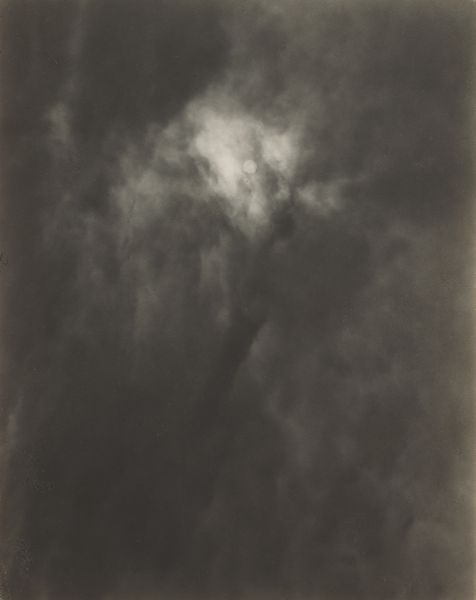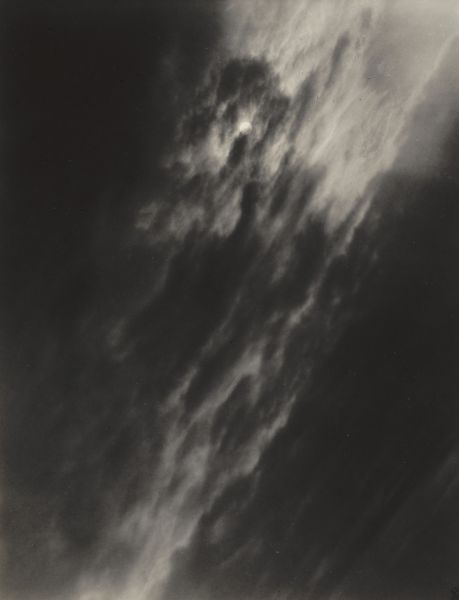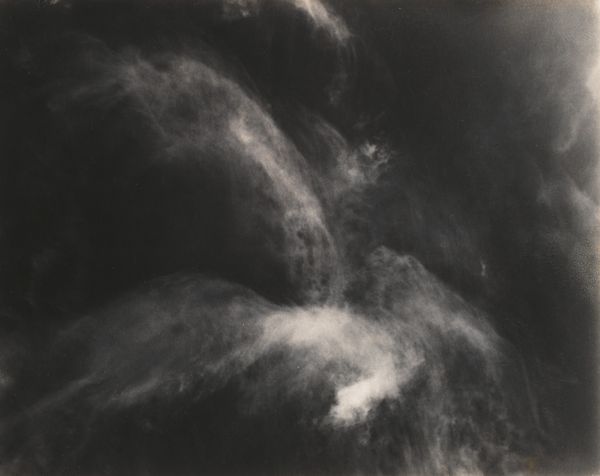
#
cloudy
#
twilight
#
natural shape and form
#
black and white photography
#
snowscape
#
charcoal drawing
#
low atmospheric-weather contrast
#
monochrome photography
#
fog
#
shadow overcast
Dimensions: sheet (trimmed to image): 11.3 x 9 cm (4 7/16 x 3 9/16 in.) mount: 34.2 x 27.2 cm (13 7/16 x 10 11/16 in.)
Copyright: National Gallery of Art: CC0 1.0
Editor: Here we have Alfred Stieglitz's "Equivalent" from around 1930, a gelatin silver print. It's a powerful image, almost entirely abstract, filled with swirling cloud formations. The monochrome palette gives it an ethereal feel. What do you see in this piece, beyond just clouds? Curator: What I find striking is how Stieglitz, through these "Equivalents," attempts to democratize the photographic medium. He removes the weight of specific subjects and instead seeks to express universal emotions and ideas through the form and tonality themselves. Consider the social and political landscape of the 1920s and 30s. Traditional hierarchies were being challenged, and Stieglitz mirrors this by declaring that a photograph of clouds could be "equivalent" to any other subject, even portraits of the elite. How does this relate, do you think, to contemporary notions of identity and representation? Editor: That’s interesting. It almost sounds like he's saying anyone, not just the established art world, can find meaning and express themselves through abstract forms. So, these aren’t just pretty pictures, they are a challenge to the establishment? Curator: Precisely. They question what is considered worthy of representation, whose experiences matter, and how artistic expression can be detached from purely representational functions and tied to social issues. This work precedes movements, such as Minimalism, that were equally interested in reduction and emphasizing experience, albeit through very different formal means. What does that emphasis on emotion over subject say about him? Editor: So, beyond the surface-level beauty, "Equivalent" pushes us to reconsider power structures within art and society itself. It’s an interesting concept – seeing a photograph of clouds as an act of rebellion. Curator: Indeed, it's a testament to the power of art to transcend its apparent subject matter and engage with broader social and political questions. Editor: This gives me a new way of viewing this piece!
Comments
No comments
Be the first to comment and join the conversation on the ultimate creative platform.
